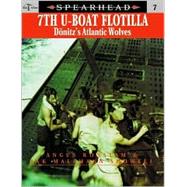Some 114 boats saw service with the flotilla and most of them served in the North Atlantic where their operations almost brought Britain to its knees. The story of the flotilla starts with the story of the convoy predators; through the grim realities of the convoy system whose escorts benefited from Ultra decrypting of the Kriegsmarine's codes; the massacre of the U-boats attempting to halt the invasion of Europe; to the final coda as 14 boats escaped from St. Nazaire to Norway.
Ian Westwell spent five years in the Royal Navy before becoming Curator of Weapons at the Royal Armouries. After a spell as a marine archaeologist he became Chief Curator at the Mel Fisher Maritime Museum in Key West. He moved back to Eng








